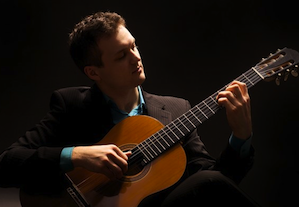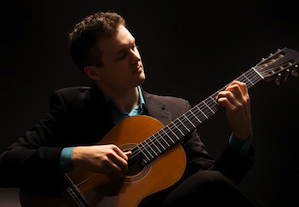
Competitions for classical musicians have long played an important role in the development of talent, and they regularly inspire audiences to get acquainted with new artists. Pianists and violinists who have won awards at prestigious events like the Van Cliburn Competition or the Queen Elizabeth Competition frequently obtain professional engagements and a level of publicity that aren’t otherwise available. In recent years, the major event of this sort for classical guitarists has been the Guitar Foundation of America International Concert Artist Competition. In addition to a cash award, the first prize includes a 50-concert tour of North and South America and China, plus well-promoted recordings with Naxos, GHA, and Mel Bay. These substantial inducements have created a truly international event, and the world-class winners have come from many different countries.
It is fascinating to hear and see the winners of this competition, the finest young classical-guitar talent in the world today, and San Francisco is fortunate that the Omni Foundation presents the winner each year in recital. On Saturday night, Vladimir Gorbach of Russia, winner of the 2011 competition, made his San Francisco debut at the Green Room for an appreciative and enthusiastic audience. He gave a nuanced and passionate performance of an excellent program that focused on mostly little-known music by Giuliani, Scarlatti, Asencio, Aguado, Piazzolla, and Llobet.
Mauro Giuliani’s Rondoletto, Op. 4, is an early work influenced by his love of Italian opera, and Gorbach’s playing sparkled with well-shaped melody, wit, and virtuosity. Domenico Scarlatti, along with Chopin one of the greatest composers to focus almost all his compositional creativity on the solo keyboard, has nevertheless become very important to guitarists, and for good reason. The scholar Ralph Kirkpatrick wrote that Scarlatti was “influenced not only by Spanish music but also by the guitar. Though Scarlatti probably never played the guitar … surely no composer ever fell more deeply under its spell.” Nevertheless, with 555 sonatas to Scarlatti’s credit it’s possible to come up with selections that guitarists do not find over familiar.
Gorbach played the Sonata in B-Flat Major, K. 441, and brought a regularly repeated jaunty motive, with great effect, through a wide range of both major and minor keys and emotions. The Sonata in B Minor, K. 87, is a deeply expressive piece that Gorbach played with touching poignancy. It was first arranged for guitar by Julian Bream and I was delighted to hear it again after many years. The Sonata in B Minor, K. 27, is one of 30 works that Scarlatti himself published and is particularly well suited for the guitar.
“Though Scarlatti probably never played the guitar … surely no composer ever fell more deeply under its spell.”
The highlight of the first half of the recital was the suite Collectici intim by Catalan composer Vicente Asencio. Each of the five movements of this unusual and expressive work presents a portrait of an emotional state: Serenity, Joy, Calm, Delight, and Haste. Asencio’s music was performed by both Andrés Segovia and Narciso Yepes, but I haven’t heard it in concert in a long time. It is profound, moving, and very well composed for the instrument; Vladimir Gorbach deserves great credit for bringing it back to public attention.
The second half of the recital featured the Andante and Rondo in A Minor by Dionisio Aguado, alternately introspective and fiery, and Miguel Llobet’s setting of the Catalan folksong El mestre, as well as his major work, the Variaciones sobre un tema de F. Sor, Op. 15. All of this was handled with mastery, grace, and assurance by Gorbach, yet his most exciting performance of the evening came with three movements, portraying Spring, Summer, and Autumn, from Astor Piazzolla’s Las cuatro estaciones porteñas (The four seasons of Buenos Aires).
Gorbach successfully mixed streetwise dirt and grit with his otherwise beautiful sound in an effect reminiscent of Piazzolla’s own performances.
Piazzolla loved the guitar, which he included in his classic quintet of bandoneon, violin, guitar, piano, and bass. The Cuatro estaciones porteñas, originally for that group, is a marvel of passionate flexibility that few solo guitarists are able to capture, but Gorbach has obviously listened to Piazzolla’s recordings carefully and rose to the occasion. The many tempo and mood changes required were perfectly modulated and, unusually for a classical guitarist, Gorbach successfully mixed streetwise dirt and grit with his otherwise beautiful sound in an effect reminiscent of Piazzolla’s own performances. The masterful arrangement was done by Sergio Assad, faculty member at the San Francisco Conservatory of Music.
The evening ended with Benvenuto Terzi’s Carillon, a delightful study that features a melody played with the left hand alone, accompanied by right-hand harmonics. It produced a uniquely peaceful and charming effect. The evening began with a preview performance of Zortzico, by Isaac Albéniz, and Bantu ,by Andrew York, engagingly performed by four high school students from the guitar program at the Ruth Asawa San Francisco School of the Arts.

